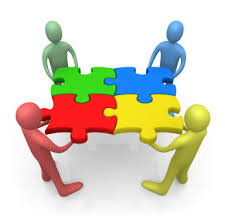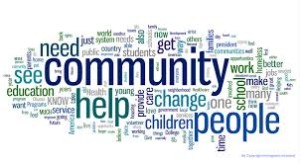 Most school—and public—librarians are committed to libraries being “open” 24/7. Our users can access resources from home or on the go from multiple devices. But we also need to be mindful of another function we serve. Our libraries should be community builders. One part of the Declaration for the Right to Libraries says, “LIBRARIES BUILD COMMUNITIES.
Most school—and public—librarians are committed to libraries being “open” 24/7. Our users can access resources from home or on the go from multiple devices. But we also need to be mindful of another function we serve. Our libraries should be community builders. One part of the Declaration for the Right to Libraries says, “LIBRARIES BUILD COMMUNITIES.
Libraries bring people together, both in person and online, to have conversations
and to learn from and help each other. Libraries provide support for seniors,
immigrants and others with special needs.”
It may seem at first reading that the statement refers to public libraries, but if your library becomes a community anchor for your school and beyond, you will be recognized as an invaluable resource—indispensable to those you serve. What does it mean for a school library to build a community? And more challenging, how can you create it?
A few weeks ago, my blog post was entitled “Safe in the Library,” and that is the first step. When students and teachers find the library to be a haven, it can easily morph into becoming the heart of the educational community. Bulletin boards and displays promoting the interests of teachers and students (and possibly administrators) attract attention. Publicizing resources connected to extracurricular activities—both those established by the school as well as those students of all ages engage in on their own—make the library a regular stopping place.
 As the Declaration suggests, you can also create avenues for online conversations (Edmodo is one way) will position you as central to your users communicating across grade and age levels. Hosting Makerspace events bring new and regular patrons into your library. Perhaps a teacher is an expert for one of these meetings, and students get interact with him or her in new ways. Having kids showcase a personal interest or skill by leading a presentation gives them a sense of ownership and increases their self-esteem.
As the Declaration suggests, you can also create avenues for online conversations (Edmodo is one way) will position you as central to your users communicating across grade and age levels. Hosting Makerspace events bring new and regular patrons into your library. Perhaps a teacher is an expert for one of these meetings, and students get interact with him or her in new ways. Having kids showcase a personal interest or skill by leading a presentation gives them a sense of ownership and increases their self-esteem.
 And don’t forget outreach. Some school libraries have organized Family Literacy nights which ties directly into a basic role of the library program. You can promote local clubs and organizations, including adult ones, to raise awareness of what is happening in the extended community—and making them conscious of you and your program. A member of a garden club might come in and give a demonstration. Once you learn what is out there, you can be creative in involving them with the school and the library with them (Don’t forget to get administrative approval first.) And, of course, reach out to your public library and to any local colleges and universities. Libraries and librarians need to work together to support each other and build communities.
And don’t forget outreach. Some school libraries have organized Family Literacy nights which ties directly into a basic role of the library program. You can promote local clubs and organizations, including adult ones, to raise awareness of what is happening in the extended community—and making them conscious of you and your program. A member of a garden club might come in and give a demonstration. Once you learn what is out there, you can be creative in involving them with the school and the library with them (Don’t forget to get administrative approval first.) And, of course, reach out to your public library and to any local colleges and universities. Libraries and librarians need to work together to support each other and build communities.
Have you done any community-building in your school library? What other suggestions do you have?
